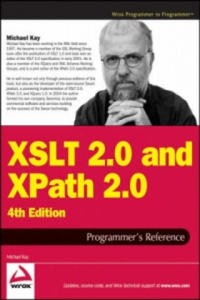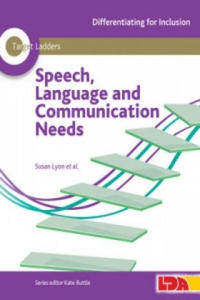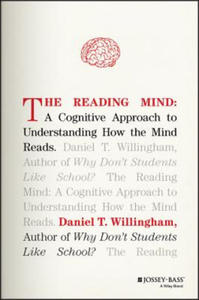libristo what every teacher should know about no child left behind 4508955
- znaleziono 11 produktów w 3 sklepach
You Should Have Known Faber & Faber
Książki / Literatura obcojęzyczna
"A great psychological thriller...I couldn't put it down". (Daisy Goodwin). It is a New York Times bestseller. Grace Sachs, a happily married therapist with a young son, thinks she knows everything about women, men and marriage. She is about to publish a book called You Should Have Known, based on her pet theory: women don't value their intuition about what men are really like, leading to serious trouble later on. But how well does Grace know her own husband? She is about to find out, and in the place of what she thought she knew, there will be a violent death, a missing husband, and a chain of terrible revelations. Left behind in the wake of a very public disaster, and horrified by the ways in which she has failed to heed her own advice, Grace must dismantle one life and create another for herself and her child.
Sklep: Libristo.pl
Consolations of Philosophy Penguin
Nauki humanistyczne
Alain de Botton, best-selling author of How Proust can Change Your Life, has set six of the finest minds in the history of philosophy to work on the problems of everyday life. Here then are Socrates, Epicurus, Seneca, Montaigne, Schopenhauer and Nietzsche on some of the things that bother us all; lack of money, the pain of love, inadequacy, anxiety, the fear of failure and the pressure to conform.
Sklep: Albertus.pl
Shadow of the Sun Penguin
Literatura faktu
'Only with the greatest of simplifications, for the sake of convenience, can we say Africa. In reality, except as a geographical term, Africa doesn't exist'. Ryszard Kapuscinski has been writing about the people of Africa throughout his career. In a study that avoids the official routes, palaces and big politics, he sets out to create an account of post-colonial Africa seen at once as a whole and as a location that wholly defies generalised explanations. It is both a sustained meditation on the mosaic of peoples and practises we call 'Africa', and an impassioned attempt to come to terms with humanity itself as it struggles to escape from foreign domination, from the intoxications of freedom, from war and from politics as theft. The Beginning: Collision, Ghana 1958 More than anything, one is struck by the light. Light everywhere. Brightness everywhere. Everywhere, the sun. Just yesterday, an autumnal London was drenched in rain. The airplane drenched in rain. A cold, wind, darkness. But here, from the morning
Sklep: Albertus.pl
Spalona Żywcem Wyd. Kieszonkowe - Souad
Książki & Multimedia > Książki
Opis - Pierwsze na świecie świadectwo ofiary zbrodni honorowej. Miała siedemnaście lat i zakochała się: zhańbiła rodzinę. Więc rodzina wydała na nią wyrok śmierci... Pokochała go pierwszą miłością. Myślała, że się z nią ożeni. Ale ukochany zniknął, a ona odkryła, że jest w ciąży. A w jej świecie to najcięższa zbrodnia... W zapomnianej przez Boga wiosce w Cisjordanii kobiety są warte mniej niż zwierzęta domowe. Tu mężczyzna jest panem życia i śmierci żony, córki, siostry. Brat może bezkarnie zabić siostrę, matka - córkę, kolejną bezużyteczną dziewczynkę, jaka się urodzi. Tu kobiecie odbiera się godność, a nawet życie zgodnie z odwiecznym obyczajem i uświęconą tradycją. A śmierć jest karą dla dziewczyny, która zhańbi rodzinę. Tak jak Souad. Wyrok wydaje jej ojciec. Szwagier dokonuje egzekucji. Oblewa Souad benzyną i podpala... SOUAD przeżyła - cudem, ale rodzina usiłowała zabić ją nawet w szpitalu. Na zawsze jednak pozostanie straszliwie okaleczona - na ciele i duszy. I wciąż musi się ukrywać; dopóki żyje, jej rodzinę okrywa hańba. Spalona żywcem, opublikowana pod pseudonimem szokująca opowieść o piekle, jakim było jej dzieciństwo i młodość, stała się międzynarodowym bestsellerem. Wydana w 37 w krajach książka przerywa tabu milczenia wobec istniejącej nadal w krajach muzułmańskich barbarzyńskiej tradycji. Nieludzkiego obyczaju, prawa mężczyzn, na mocy którego co najmniej pięć tysięcy kobiet pada co roku ofiarą zbrodni honorowej. Nazwa - Spalona Żywcem Wyd. Kieszonkowe Autor - Souad Oprawa - Miękka Wydawca - Amber Kod ISBN - 9788324159406 Kod EAN - 9788324159406 Wydanie - 1 Rok wydania - 2016 Tłumacz - 31182,maria rostworowska; Format - 110 x 175 x 14 Ilość stron - 224 Podatek VAT - 5% Premiera - 2016-06-23
Sklep: InBook.pl
XSLT 2.0 and XPath 2.0 Programmer's Reference 4e John Wiley & Sons Inc
Książki / Literatura obcojęzyczna
This book is primarily a practical reference book for professional XSLT developers. It assumes no previous knowledge of the language, and many developers have used it as their first introduction to XSLT; however, it is not structured as a tutorial, and there are other books on XSLT that provide a gentler approach for beginners. The book does assume a basic knowledge of XML, HTML, and the architecture of the Web, and it is written for experienced programmers. There's no assumption that you know any particular language such as Java or Visual Basic, just that you recognize the concepts that all programming languages have in common. The book is suitable both for XSLT 1.0 users upgrading to XSLT 2.0, and for newcomers to XSLT. The book is also equally suitable whether you work in the Java or .NET world. As befits a reference book, a key aim is that the coverage should be comprehensive and authoritative. It is designed to give you all the details, not just an overview of the 20 percent of the language that most people use 80 percent of the time.It's designed so that you will keep coming back to the book whenever you encounter new and challenging programming tasks, not as a book that you skim quickly and then leave on the shelf. If you like detail, you will enjoy this book; if not, you probably won't. But as well as giving the detail, this book aims to explain the concepts, in some depth. It's therefore a book for people who not only want to use the language but who also want to understand it at a deep level. The book aims to tell you everything you need to know about the XSLT 2.0 language. It gives equal weight to the things that are new in XSLT 2.0 and the things that were already present in version 1.0. The book is about the language, not about specific products. However, there are appendices about Saxon (the author's own implementation of XSLT 2.0), about the Altova XSLT 2.0 implementation, and about the Java and Microsoft APIs for controlling XSLT transformations, which will no doubt be upgraded to handle XSLT 2.0 as well as 1.0. A third XSLT 2.0 processor, Gestalt, was released shortly before the book went to press, too late to describe it in any detail. But the experience of XSLT 1.0 is that there has been a very high level of interoperability between different XSLT processors, and if you can use one of them, then you can use them all.In the previous edition we split XSLT 2.0 and XPath 2.0 into separate volumes. The idea was that some readers might be interested in XPath alone. However, many bought the XSLT 2.0 book without its XPath companion and were left confused as a result; so this time, the material is back together. The XPath reference information is in self-contained chapters, so it should still be accessible when you use XPath in contexts other than XSLT. The book does not cover XSL Formatting Objects, a big subject in its own right. Nor does it cover XML Schemas in any detail. If you want to use these important technologies in conjunction with XSLT, there are other books that do them justice. This book contains twenty chapters and eight appendixes (the last of which is a glossary) organized into four parts. The following section outlines what you can find in each part, chapter, and appendix. Part I: Foundations: The first part of the book covers essential concepts. You should read these before you start coding.If you ignore this advice, as most people do, then you read them when you get to that trough of despair when you find it impossible to make the language do anything but the most trivial tasks. XSLT is different from other languages, and to make it work for you, you need to understand how it was designed to be used. Chapter 1: XSLT in Context: This chapter explains how XSLT fits into the big picture: how the language came into being and how it sits alongside other technologies. It also has a few simple coding examples to keep you alert. Chapter 2: The XSLT Processing Model: This is about the architecture of an XSLT processor: the inputs, the outputs, and the data model. Understanding the data model is perhaps the most important thing that distinguishes an XSLT expert from an amateur; it may seem like information that you can't use immediately, but it's knowledge that will stop you making a lot of stupid mistakes. Chapter 3: Stylesheet Structure: XSLT development is about writing stylesheets, and this chapter takes a bird's eye view of what stylesheets look like.It explains the key concepts of rule-based programming using templates, and explains how to undertake programming-in-the-large by structuring your application using modules and pipelines. Chapter 4: Stylesheets and Schemas: A key innovation in XSLT 2.0 is that stylesheets can take advantage of knowledge about the structure of your input and output documents, provided in the form of an XML Schema. This chapter provides a quick overview of XML Schema to describe its impact on XSLT development. Not everyone uses schemas, and you can skip this chapter if you fall into that category. Chapter 5: The Type System: XPath 2.0 and XSLT 2.0 offer strong typing as an alternative to the weak typing approach of the 1.0 languages. This means that you can declare the types of your variables, functions, and parameters, and use this information to get early warning of programming errors. This chapter explains the data types available and the mechanisms for creating user-defined types. Part II: XSLT and XPath Reference: This section of the book contains reference material, organized in the hope that you can easily find what you need when you need it.It's not designed for sequential reading, though you might well want to leaf through the pages to discover what's there. Chapter 6: XSLT Elements: This monster chapter lists all the XSLT elements you can use in a stylesheet, in alphabetical order, giving detailed rules for the syntax and semantics of each element, advice on usage, and examples. This is probably the part of the book you will use most frequently as you become an expert XSLT user. It's a "no stone unturned" approach, based on the belief that as a professional developer you need to know what happens when the going gets tough, not just when the wind is in your direction. Chapter 7: XPath Fundamentals: This chapter explains the basics of XPath: the low-level constructs such as literals, variables, and function calls. It also explains the context rules, which describe how the evaluation of XPath expressions depends on the XSLT processing context in which they appear. Chapter 8: XPath: Operators on Items: XPath offers the usual range of operators for performing arithmetic, boolean comparison, and the like.However, these don't always behave exactly as you would expect, so it's worth reading this chapter to see what's available and how it differs from the last language that you used. Chapter 9: XPath: Path Expressions: Path expressions are what make XPath special; they enable you to navigate around the structure of an XML document. This chapter explains the syntax of path expressions, the 13 axes that you can use to locate the nodes that you need, and associated operators such as union, intersection, and difference. Chapter 10: XPath: Sequence Expressions: Unlike XPath 1.0, in version 2.0 all values are sequences (singletons are just a special case). Some of the most important operators in XPath 2.0 are those that manipulate sequences, notably the "for" expression, which translates one sequence into another by applying a mapping. Chapter 11: XPath: Type Expressions: The type system was explained in Chapter 5; this chapter explains the operations that you can use to take advantage of types. This includes the "cast" operation which is used to convert values from one type to another.A big part of this chapter is devoted to the detailed rules for how these conversions are done.Chapter 12: XSLT Patterns: This chapter returns from XPath to a subject that's specific to XSLT. Patterns are used to define template rules, the essence of XSLT's rule-based programming approach. The reason for explaining them now is that the syntax and semantics of patterns depends strongly on the corresponding rules for XPath expressions. Chapter 13: The Function Library: XPath 2.0 includes a library of functions that can be called from any XPath expression; XSLT 2.0 extends this with some additional functions that are available only when XPath is used within XSLT. The library has grown immensely since XPath 1.0. This chapter provides a single alphabetical reference for all these functions. Chapter 14: Regular Expressions: Processing of text is an area where XSLT 2.0 and XPath 2.0 are much more powerful than version 1.0, and this is largely through the use of constructs that exploit regular expressions. If you're familiar with regexes from languages such as Perl, this chapter tells you how XPath regular expressions differ. If you're new to the subject, it explains it from first principles.Chapter 15: Serialization: Serialization in XSLT means the ability to generate a textual XML document from the tree structure that's manipulated by a stylesheet. This isn't part of XSLT processing proper, so (following W3C's lead) it's separated it into its own chapter. You can control serialization from the stylesheet using an declaration, but many products also allow you to control it directly via an API. Part III: Exploitation: The final section of the book is advice and guidance on how to take advantage of XSLT to write real applications. It's intended to make you not just a competent XSLT coder, but a competent designer too. The best way of learning is by studying the work of others, so the emphasis here is on practical case studies. Chapter 16: Extensibility: This chapter describes the "hooks" provided in the XSLT specification to allow vendors and users to plug in extra functionality. The way this works will vary from one implementation to another, so we can't cover all possibilities, but one important aspect that the chapter does cover is how to use such extensions and still keep your code portable.Chapter 17: Stylesheet Design Patterns: This chapter explores a number of design and coding patterns for XSLT programming, starting with the simplest "fill-in-the-blanks" stylesheet, and extending to the full use of recursive programming in the functional programming style, which is needed to tackle problems of any computational complexity. This provides an opportunity to explain the thinking behind functional programming and the change in mindset needed to take full advantage of this style of development. Chapter 18: Case Study: XMLSpec: XSLT is often used for rendering documents, so where better to look for a case study than the stylesheets used by the W3C to render the XML and XSLT specifications, and others in the same family, for display on the web? The resulting stylesheets are typical of those you will find in any publishing organization that uses XML to develop a series of documents with a compatible look-and-feel. Chapter 19: Case Study: A Family Tree: Displaying a family tree is another typical XSLT application.This example with semi-structured data-a mixture of fairly complex data and narrative text-that can be presented in many different ways for different audiences. It also shows how to tackle another typical XSLT problem, conversion of the data into XML from a legacy text-based format. As it happens, this uses nearly all the important new XSLT 2.0 features in one short stylesheet. But another aim of this chapter is to show a collection of stylesheets doing different jobs as part of a complete application. Chapter 20: Case Study: Knight's Tour: Finding a route around a chessboard where a knight visits every square without ever retracing its steps might sound a fairly esoteric application for XSLT, but it's a good way of showing how even the most complex of algorithms are within the capabilities of the language. You may not need to tackle this particular problem, but if you want to construct an SVG diagram showing progress against your project plan, then the problems won't be that dissimilar. Part IV: Appendices: A ppendix A: XPath 2.0 Syntax Summary: Collects the XPath grammar rules and operator precedences into one place for ease of reference.Appendix B: Error Codes: A list of all the error codes defined in the XSLT and XPath language specifications, with brief explanations to help you understand what's gone wrong. Appendix C: Backward Compatibility: The list of things you need to look out for when converting applications from XSLT 1.0. Appendix D: Microsoft XSLT Processors: Although the two Microsoft XSLT processors don't yet support XSLT 2.0, we thought many readers would find it useful to have a quick summary here of the main objects and methods used in their APIs. Appendix E: JAXP: the Java API for XML Processing: JAXP is an interface rather than a product. Again, it doesn't have explicit support yet for XSLT 2.0, but Java programmers will often be using it in XSLT 2.0 projects, so the book includes an overview of the classes and methods available. Appendix F: Saxon: At the time of writing Saxon (developed by the author of this book) provides the most comprehensive implementation of XSLT 2.0 and XPath 2.0, so its interfaces and extensions are covered in some detail. Appendix G: Altova: Altova, the developers of XML Spy, have an XSLT 2.0 processor that can be used either as part of the development environment or as a freestanding component.This appendix gives details of its interfaces. Appendix H: Glossary Note: CD-ROM/DVD and other supplementary materials are not included as part of eBook file.
Sklep: Libristo.pl
Target Ladders: Speech, Language & Communication Needs LDA
Książki / Literatura obcojęzyczna
Every class includes a number of pupils whose learning needs are greater than, or different from, those of the rest of the class. All teachers should be able to identify targets to use as the baseline for intervention and to help those children to make appropriate progress in small steps so as to feel a sense of achievement. However, many teachers in mainstream primary schools don't know what the next 'target' should be. They know what the child can't do, but they often don't know how to express that as a target. This fourth title in a powerful new series of practical books will support SENCos and mainstream primary school teachers in thinking about what their SEN pupils can do and deciding on the next steps. It offers a system for setting and monitoring targets which can replace or complement IEPs. Suggestions for strategies and activities for achieving targets are included throughout. * Each book comes with a CD with photocopiable material, including targets pages and Records of Progress templates.Target Ladders: Speech, Language and Communication Needs addresses seven key aspects of SLCN: Early communication; Attention; Play and social interaction; Comprehension; Expressive language; Social communication; Speech. Helpful checklists and practical advice for creating SLCN-friendly classrooms make this an ideal practical resource for the busy primary teacher. ABOUT THE SERIES: The Differentiating for Inclusion series is designed to narrow the gap between children with SEN and their peers. Books in this series offer teachers helpful guidance in identifying both what children can already do and what specific targets they need support in achieving. The positive approach of structured small-steps targets, together with activities for teaching these, will ensure that children with SEN make accelerated progress. The books are all written by experienced practitioners.
Sklep: Libristo.pl
Reading Mind - A Cognitive Approach to Understanding How the Mind Reads John Wiley & Sons Inc
Książki / Literatura obcojęzyczna
A Map to the Magic of ReadingStop for a moment and wonder: what's happening in your brain right now--as you read this paragraph? How much do you know about the innumerable and amazing connections that your mind is making as you, in a flash, make sense of this request? Why does it matter?The Reading Mind is a brilliant, beautifully crafted, and accessible exploration of arguably life's most important skill: reading. Daniel T. Willingham, the bestselling author of Why Don't Students Like School?, offers a perspective that is rooted in contemporary cognitive research. He deftly describes the incredibly complex and nearly instantaneous series of events that occur from the moment a child sees a single letter to the time they finish reading. The Reading Mind explains the fascinating journey from seeing letters, then words, sentences, and so on, with the author highlighting each step along the way. This resource covers every aspect of reading, starting with two fundamental processes: reading by sight and reading by sound. It also addresses reading comprehension at all levels, from reading for understanding at early levels to inferring deeper meaning from texts and novels in high school. The author also considers the undeniable connection between reading and writing, as well as the important role of motivation as it relates to reading. Finally, as a cutting-edge researcher, Willingham tackles the intersection of our rapidly changing technology and its effects on learning to read and reading.Every teacher, reading specialist, literacy coach, and school administrator will find this book invaluable. Understanding the fascinating science behind the magic of reading is essential for every educator. Indeed, every "reader" will be captivated by the dynamic but invisible workings of their own minds.
Sklep: Libristo.pl
Undoing Faber & Faber
Książki / Literatura obcojęzyczna
The Undoing is the most talked about TV series of 2020. From the creators of Big Little Lies, starring Nicole Kidman, Hugh Grant and Donald Sutherland. 'A great psychological thriller ...I couldn't put it down.' Daisy Goodwin'Gripping . . .had me in its thrall from page one . . .Brilliant.' MetroA New York Times bestsellerGrace Sachs, a happily married therapist with a young son, thinks she knows everything about women, men and marriage. She is about to publish a book based on her pet theory: women don't value their intuition about men, leading to serious trouble later on. But how well does Grace know her own husband? She is about to find out, and in the place of what she thought she knew, there will be a violent death, a missing husband, and a chain of terrible revelations.Left behind in the wake of a very public disaster, and horrified by the ways in which she has failed to heed her own advice, Grace must dismantle one life and create another for herself and her child. The Undoing was originally published under the title You Should Have Known
Sklep: Libristo.pl
Third Reich in Power Penguin
Inne 1
The Third Reich in Power examines how it was possible for a group of ideological obsessives to remould a society famous for its sophistication and complexity into a one-party state directed at war and race hate. Richard J. Evans shows how the Nazis won over the hearts and minds of German citizens, twisted science, religion and culture, and transformed the economy, education, law and order to achieve total dominance in German politics and society. Drawing on an extraordinary range of research, blending narrative, description and analysis he creates a picture of a dictatorship consumed by visceral hatreds and ambitions, and driven by war. 'Authoritative history... impressive sweep... This essential book comes as a stark reminder, should we need one, of how much freedom a people is prepared to give away in a political climate dominated by fear.' Daily Telegraph Extract from The Third Reich in Power, 1933-1939 by Richard J. Evans Despised minorities were, to be sure, put in the concentration camps; but to focus exclusively on this ignores the much larger number of political and other deviants condemned by the courts and put in state prisons and penitentiaries. The further in time we get from Nazi Germany, the more difficult it becomes for historians living in democratic political systems and in cultures which respect the rights of the individual to make the leap of imagination necessary to understand people's behaviour in a state such as Nazi Germany, where imprisonment, torture or even death might await anyone who dared to voice the slightest criticism of the regime and its leaders. Those who approved of such repression were in all likelihood a minority, active supporters and functionaries of the Party like the Block Wardens, and a good number of middle- and upper-class, conservative Germans who thought the best place for Marxists to be was in prison anyway. Even they, however, knew well enough that they had to be careful about what they said and did, and the dangers of not doing so became abundantly clear once opposition began to spread among these groups too. The shots that killed Kurt von Schleicher, Herbert von Bose, Edgar Jung, Gustav von Kahr, Erich Klausener and Kurt von Bredow at the beginning of July 1934 were also a warning to upper- and middle-class conservatives to keep their heads down if they did not want them to be blown off. Ordinary conservative citizens like Luise Solmitz, who harboured no thoughts of political activism, may have turned aside from the bleak fact of the regime's willingness to murder its opponents, revealed so starkly in late June and early July 1934, in their relief that the order they craved had been restored; to such people, Röhm's stormtroopers seemed as great a menace as the Reichsbanner or the Red Front-Fighters' League of the Weimar years. Yet behind closed doors they cannot have been oblivious to the fate of the conservative clique around Vice-Chancellor von Papen. It was not only the third or so of the population who had been committed to the Marxist left before 1933 that was subject to massive intimidation. Indeed, scarcely had the murderous violence of the 'Night of the Long Knives' receded, than an even larger minority than the Marxists, that of the German Catholics, began to be prosecuted and imprisoned as they gave vent to their increasingly critical views of the regime in public. More general still were measures such as the Law on Malicious Gossip, which clamped down on the most trivial expressions of dissent and put people who told jokes about Hitler and Göring in prison. These were mainly members of the German working class, it is true, but the working class after all made up around half the entire population, and middle- and even upper-class offenders in this respect were brought before the Special Courts as well. Successful prosecutions under this law were a further instrument of mass intimidation, adding to the general climate of fear and helping to create the spiral of silence in which the regime could commit ever greater crimes without fear of public censure or opposition. The truth is that far from Nazi terror being levelled exclusively against small and despised minorities, the threat of arrest, prosecution and incarceration in increasingly brutal and violent conditions loomed over everyone in the Third Reich, even, as we have seen in the cases brought before the Special Courts, over members of the Nazi Party itself. The regime intimidated Germans into acquiescence, visiting a whole range of sanctions upon those who dared to oppose it, systematically disorienting people, and depriving them of their traditional social and cultural milieux, such as the pub or the club or the voluntary association, above all where these could be seen as a potential source of resistance, as in the case of the labour movement. Fear and terror were integral parts of the Nazis' armoury of political weapons from the very beginning. The state and the Party could use them because within a few months of Hitler's appointment as Reich Chancellor, they had systematically deprived all Germans of virtually every basic human and civil right they had enjoyed under the Weimar Republic. The law was no protection against the state if the state or any of its agencies suspected that a citizen was disinclined to demonstrate approval of its policies and purposes. On the contrary, vast numbers of new, often draconian laws were decreed that gave the police, the Gestapo and the SS a virtual carte blanche to deal with anyone suspected of deviating from the norms of human behaviour laid down by the Third Reich for its citizens. In this situation, it was not surprising that ordinary people and lower-level officials of the Nazi Party began to reinforce the atmosphere of pervasive terror and intimidation by sending their own unsolicited denunciations of deviants to the Gestapo. At the same time, the Gestapo was only one part of a much wider net of surveillance, terror and persecution cast by the Nazi regime over German society in the 1930s; others included the SA and SS, the Criminal Police, the prison service, the social services and employment offices, the medical profession, health centres and hospitals, the Hitler Youth, the Block Wardens and even apparently politically neutral organizations like tax offices, the railway and the post office. All of these furnished information about deviants and dissidents to the Gestapo, the courts and the prosecution service, forming a polymorphous, uncoordinated but pervasive system of control in which the Gestapo was merely one institution among many. Everything that happened in the Third Reich took place in this pervasive atmosphere of fear and terror, which never slackened and indeed became far more intense towards the end. 'Do you know what fear is?' an elderly worker asked an interviewer some years after it was all over: 'No. The Third Reich was fear.' Yet terrorism was only one of the Third Reich's techniques of rule. For the Nazis did not just seek to batter the population into passive, sullen acquiescence. They also wanted to rouse it into positive, enthusiastic endorsement of their ideals and their policies, to change people's minds and spirits and to create a new German culture that would reflect their values alone. This meant propaganda, and here too, as we shall now see, they went to unprecedented lengths to achieve their aims.
Sklep: Albertus.pl
Mother's Reckoning Random House Publishing
Książki / Literatura obcojęzyczna
The acclaimed New York Times bestseller by Sue Klebold, mother of one of the Columbine shooters, about living in the aftermath of Columbine.On April 20, 1999, Eric Harris and Dylan Klebold walked into Columbine High School in Littleton, Colorado. Over the course of minutes, they would kill twelve students and a teacher and wound twenty-four others before taking their own lives.For the last sixteen years, Sue Klebold, Dylan's mother, has lived with the indescribable grief and shame of that day. How could her child, the promising young man she had loved and raised, be responsible for such horror? And how, as his mother, had she not known something was wrong? Were there subtle signs she had missed? What, if anything, could she have done differently?These are questions that Klebold has grappled with every day since the Columbine tragedy. In A Mother's Reckoning , she chronicles with unflinching honesty her journey as a mother trying to come to terms with the incomprehensible. In the hope that the insights and understanding she has gained may help other families recognize when a child is in distress, she tells her story in full, drawing upon her personal journals, the videos and writings that Dylan left behind, and on countless interviews with mental health experts.Filled with hard-won wisdom and compassion, A Mother's Reckoning is a powerful and haunting book that sheds light on one of the most pressing issues of our time. And with fresh wounds from the Newtown and Charleston shootings, never has the need for understanding been more urgent.All author profits from the book will be donated to research and to charitable organizations focusing on mental health issues.- Washington Post , Best Memoirs of 2016
Sklep: Libristo.pl
Sklepy zlokalizowane w miastach: Warszawa, Kraków, Łódź, Wrocław, Poznań, Gdańsk, Szczecin, Bydgoszcz, Lublin, Katowice
Szukaj w sklepach lub całym serwisie
1. Sklepy z libristo pl what every teacher should know about no child left behind 4508955
2. Szukaj na wszystkich stronach serwisu
t1=0.075, t2=0, t3=0, t4=0, t=0.075











